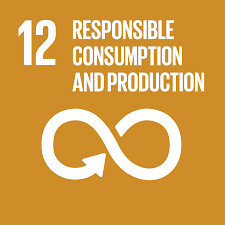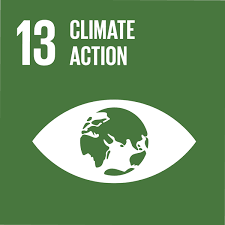Colliding Epistemes
Colliding Epistemes explores the ramifications of putting creative perspectives and scientific competence into close contact, focusing on the friction that results from the clash of disciplines, approaches, and mindsets.
This exposition shows, among other things, the results of a collaboration of Dr. Audrey-Flore Ngomsik and the collective of artists 3137 within the European Studiotopia program.
The Studiotopia program

STUDIOTOPIA is a creative journey through Europe that addresses sustainable development via the convergence of art and science. This program intends to strengthen partnerships between cultural and research organizations, universities, innovation centres, creatives, and European citizens.
For 18 months, I have been one of the thirteen scientists in residence of the Studiotopia program. I have collaborated with the collective of artists 3137.
Our project
Half of the world’s habitable land is used for agriculture.
How this land is managed has a direct impact on the levels of greenhouse gases in the atmosphere, on how biodiversity is preserved (or not), and on the kind of diet people have access to.
By making great strides in productivity, the industrial food system has managed to meet the demands of a growing global population (more or less).
However, this approach to food production, and the management of food by-products, is endangering biodiversity and human health.
It has become clear that this food system is no longer fit for the 21st century and that a new model is required.
The project focuses on how the concept of the Circular Economy could contribute to a more sustainable food system and contribute to a healthier daily nutrition.
The project has been developed around the notions of collaboration, sustainability and consumption towards climate action and change, that respond to the following SDG goals:
It will show the three main problems of the industrial food system:
- Environmental degradation (water, soil, CO2 emissions, etc.)
- Generation of waste
- Poor outcomes
Our goal is to re-imagine our everyday eating habits changing towards a sustainable planet and to become aware of our ecological footprint.
We want to look for existing sustainable/circular systems and create new stories that will help us all change the way we consume.
Stories that narrate not only what should be learnt, but also speculate on the future of the food industry and even more on the future of our everyday life.
During the course of the project, the following questions have arisen:
The Outcome of the project
Click on the button below to read about the outcome of the project:
Putting creative perspective in contact with science
Interview of Dr. Audrey-Flore Ngomsik
In your residency you have entered the world and research field of an artist. How did this experience change your view in general, and particularly of your own research?
A part of my work is to teach people about climate change, debunk misinformation they receive in the news, and engage them.
I have participated in the residency to emphasise this.
The use of art as a channel for communication, will help me engage other artists with the topic and translate the science in an interactive and (dare I say it?) ‘fun’ way.
For me, art and science are very complementary, and the residency taught me that when put together they have a ripple effect to induce change by helping to communicate science to the general public.
Art and science collide to make the perfect environment for change.
The scientist is the brain, and the artist is the heart.
In the world of arts, work is communicating to a wider audience compared to most science. Also the work itself may be produced with the help of citizens, or experts of wide variety. Did your residency showcase this and or made you aware of this? Did it change your view of the role of a scientist as a citizen and community member?
I am not sure, that I agree with your first statement.
Modern art in particular only speaks to a very select audience.
The average “citizen” looks at modern art, shakes his or her head and trundles on.
Over the last 1½ or so years, the number of scientists appearing in the media has increased sharply.
Not an enviable position for someone generally used to talk to peers, especially considering that they were asked to provide answers to a developing situation, regarding a disease about which little was known (and which is still not fully understood).
The number of (self-proclaimed) experts has also risen, and it is fair to say they aren’t any wiser.
Scientific work needs the engagement of citizens to be accepted, after all it is (like art) funded by the public.
As regards the above question, this project has made me more aware of this dependence of both science and art on public acceptance and the need for efficient communication to achieve this acceptance.
During your residency you and artist discussed work in light of one or several SDG’s. Are artists and scientists combined better equipped to bring SDG’s come to fruition than each on their own? Did your residency (so far) influence your answer here, if yes, how?
Different strokes for different folks.
Therefore, yes, a combination of science and art will lead to better understanding of the matter, provided each disciplines’ fundamental qualities aren’t compromised in the approach.
Artists go out in the world for inspiration and research, and later for presentation, in contrast to many scientists that work on dedicated problems, often confined in laboratories, showing results within academia. Did your residency inspire you to bring your research to a wider audience? And do you find ways to do so, now or later?
This question pertains to a somewhat narrow perception of science and scientists.
Yes, science does take place in the ivory tower, at least to some extent, and members of the general public would find themselves lost in that ivory tower very quickly.
This is because the wealth of knowledge amassed over the centuries is such that it requires a specialist language.
That is not to say that scientists are self-absorbed beings all the time, though some scientific work lends itself more easily to wider discussions.
I’ve been working in fields which could be explained to a wider public quite easily, at least in terms of their application (‘hand-waiving arguments’), not necessarily in terms of their theoretical foundation (mathematical equations).
That said, this project has made me realise that more needs to be done, that science needs to be communicated in better ways.
Artists and scientists speak very different languages, even though their research can be quite close. Can you give examples on how you encountered and overcame this problem? What other challenges on differences in knowledge and communication have you faced as a researcher in residency with an artist?
In our project, we wanted to show that what is considered as (food)waste by someone, could in fact be a raw material for someone else.
This is what the circular economy is about.
I have been to Greece to apply this concept with orange peels, eggshells, and banana peels to make air freshener, essential oils, calcium pills, water cleaner and other products.
I have seen how terms which are so familiar in the science world that they are universally understood, regardless of the country any given scientist may come from. That was not the case here.
We are really talking different languages.
It was quite humbling for me to have to adapt my language so that we could work efficiently together, and to see how fast they could catch up when necessary.
I had to also adapt the experiments that I thought of at the beginning. I would have shocked any scientist today, but probably not 100 years ago.
I did like the colliding of these two different worlds and will go on expanding it in the future.
Would you recommend a residency to your colleagues? Is such residency more relevant for younger or senior scientists?
Projects like this can be an eye-opener, in particular with respect to communication.
Whether participation in such projects is helpful or not will therefore depend on the career-path of the scientist in question, e.g. researchers working on highly classified projects (say, in a military lab) would probably find the experience rather useless.
On the other extreme of the scale, students studying to become teachers would probably find this extremely useful.
Colliding Epistemes
The exposition has been presented at Bozar, the Centre for Fine Arts; from May 6th to June 19th, 2023.
Rue Ravenstein 23, 1000 Brussels








Kommentare